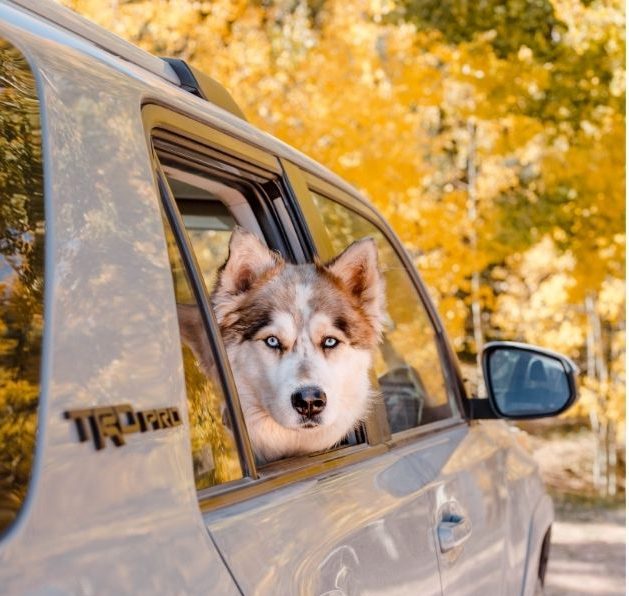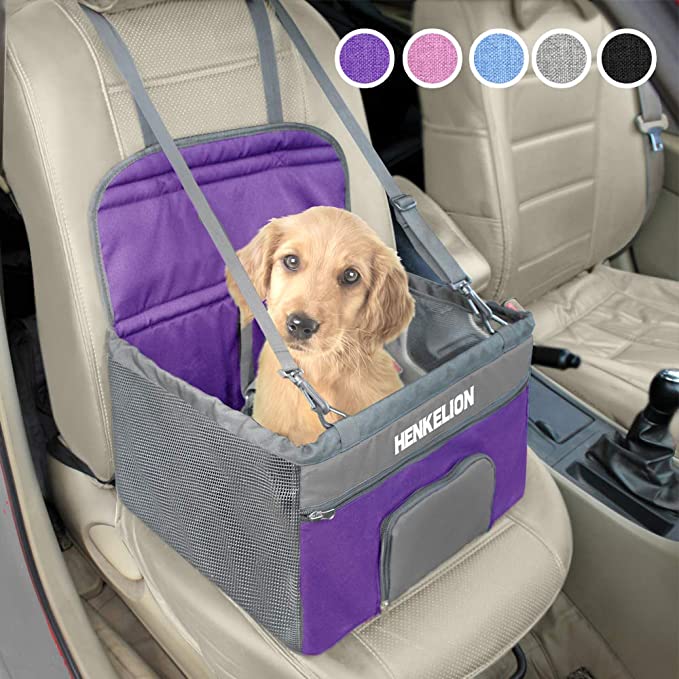How To Keep Your Pet Safe In The Car
Posted on April 10, 2021

Photo via Canva
Along with providing great company and plenty of furry cuddles at home, it’s no secret that Fluffy and Fido are also along for the ride when it comes to being in the backseat. Whether it’s a routine short drive to a vet appointment or bringing the dog up to the cottage for the weekend, keeping your pet safe while on the roads is key. Just like young children, pets can often be prone to anxiety or discomfort during car trips, and need the same amount of reassurance and care. With Sunday, April 11 marking National Pet Day, our furry friends are close to our hearts and top of mind, and we've decided to honour the fluffy companions in our life by bringing you the latest and greatest on car pet safety!
At CarHub, we care just as much about our four-legged friends as we do about our loyal customers, and we want to ensure that everyone is comfortable on the ride home. Here are some suggestions for keeping your pets safe and secure while driving:
Keep pets off human laps and out of passenger seats:
All pets should be safely and separately harnessed and restrained while on a drive. This means keeping your feline or canine off your lap as you drive, and also off of the laps of passengers. Remember, the passenger seat is reserved only for humans, and should not be used by a fluffy critter. Keep your pets secured in the backseat, at all times.
Use a pet car seat:
Is there anything more adorable than a small dog or a cat riding in a pet car seat? We think that toddlers in booster seats might be a close second, but cuteness aside, pet car seats also offer practicality and safety. Available online and at big box retailers, these pet seating options are breathable, roomy and come with built-in seatbelts to keep your fur babies secured at all times.

Invest in pet restraints for your dog:
If you have a playful doggo who simply won’t sit still during a commute, a pet restraint is likely your best option. Pet harnesses for the car can be fastened directly to the seat itself, and eliminate the need for a large, boxy car seat if that isn’t a suitable solution for your little furry friend. Look out for options like seatbelt harnesses or a direct to seat tether, if these are choices which work for your dog.

Calm your kitty down before placing it in the carrier:
A nervous, aggressive cat who fears an unfamiliar environment (the inside of your vehicle) or dreads an impending trip to the vet can wreak havoc in a carrier. Ensure that your kitty has eaten and drank water within a couple hours of the car journey, and look into vet-approved medicine for motion sickness if Kitty suffers from car sickness. A relaxed, well-fed and hydrated cat will make for a calm and secure passenger, and a stress-free drive for you.
Don’t speed:
Cats and dogs can be just as sensitive to sharp, sudden turns, hectic traffic and accelerated speeds as humans. Try not to disrupt your little furry friend by driving recklessly or pushing the speed limit. Not only could you risk an accident, but you could also have an agitated little buddy in the back of the car when you arrive at your destination.
Avoid blaring loud music:
We all know how energizing loud music can be before a long day of work or en route to your road trip destination, but you might want to lower your playlist if you have your fur baby in the car. Some animals may be disrupted by pumpin’ beats, and may make unexpected movements in reaction to the music, which may result in them feeling alarmed or distressed.
Take rest stops on longer trips with your dog:
If you are taking your best friend on a weekend getaway with you, you will want to take plenty of rest stops along the way. Stop for energizing walks, bathroom breaks and quick rests that will benefit both your canine companion and yourself.
